There are approximately 500 Honors Theses in the Digital Commons at Connecticut College. Since 2011, all new Honors Theses are deposited by requirement in this growing and popular collection of outstanding student work.
Some of the most popular theses are downloaded tens of thousands of times, such as Cecilia Brown’s 2013 thesis, entitled “Are We Becoming More Socially Awkward? An Analysis of the Relationship Between Technological Communication Use and Social Skills in College Students,” which has been downloaded more than 73,000 times.
Director of Special Collections, Ben Panciera, recently told me on the telephone, Honors Theses average about 2,000 downloads overall, with about 400 downloads per year, or roughly once a day. The top ten theses in Economics have all been downloaded more than 1,000 times.
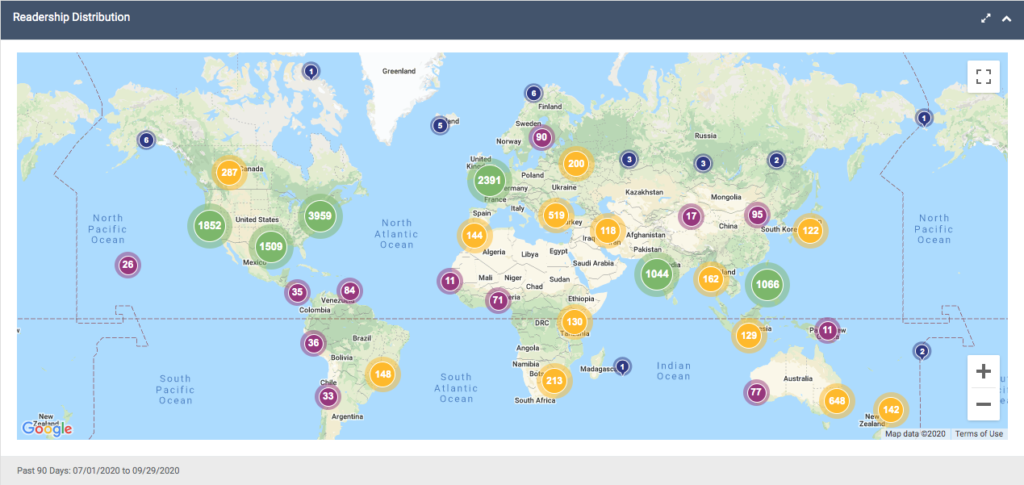
(Jul. 1, 2020 – Sept. 29, 2020)
Honors Theses are not only popular on the internet, at Connecticut College they represent outstanding undergraduate achievement. In a recent article, Director of Institutional Research and Planning, John Nugent wrote, “The honors thesis is a signature capstone research opportunity that requires substantial work from students and their faculty advisors—it is a two-semester commitment to conceptualizing and bringing a project to fruition.”
So what is the library doing with these important papers other than disseminating their ideas, the names of their authors, advisors, and our hosting institution, Connecticut College? It is my belief that the collection of honors theses maintained in our Digital Commons is ripe for research.
It is my goal to analyze every citation in every undergraduate Honors Thesis at Connecticut College in the hopes of discovering and quantifying the kinds of sources our senior honors students are using in their research to inform collection development and library instruction. Some typical questions that are asked every year include the following:
- How long are theses and how many citations do they contain?
- What percentage of sources cited are available in the library’s collections?
- What can be said in general about senior honors students’ citation behavior, and what opportunities does this behavior create for instruction and collaboration?
Because the work of coding each thesis is so laborious, Director of Research Support & Curricular Technology, Jessica McCullough, encouraged me to focus on individual departments. So I began to concentrate on the department of Economics, since it is one of the most common majors at the College, according to the Academic Fact Sheet 2019-20, and the largest department in my liaison areas (Anthropology, Economics, Government/International Relations, Philosophy). Ultimately, I hope to work through the theses in each of these departments.
Honors Theses in Economics
At the time of this writing, there are 34 Honors Theses in Economics in the Digital Commons. Combined, they amount to 2,771 pages and 1,903 references, which I analyze below.
On average, there are about 3 theses done per year in the department.
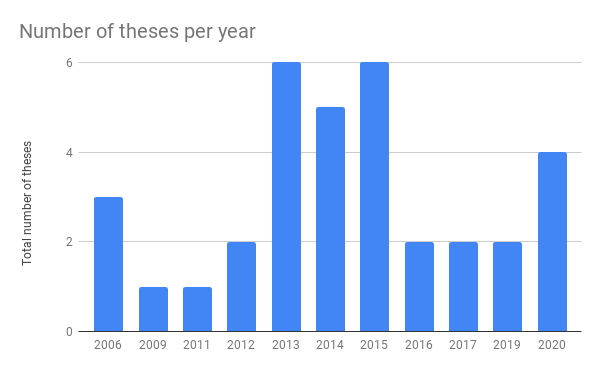
The average economics thesis is 81.5 pages in length. The shortest was 29 pages, and the longest was 153 pages.
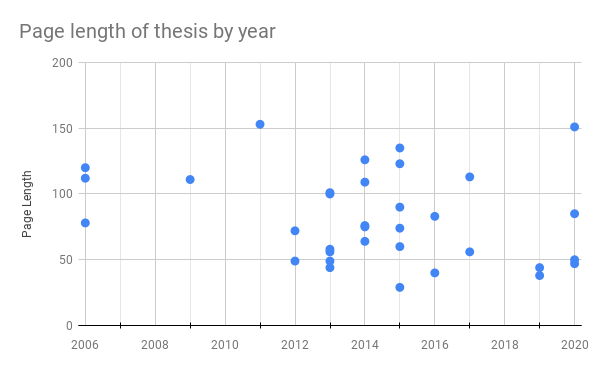
The average economics thesis contains 55.97 references in its bibliography. The smallest number of references was 13, while the largest number was 168.
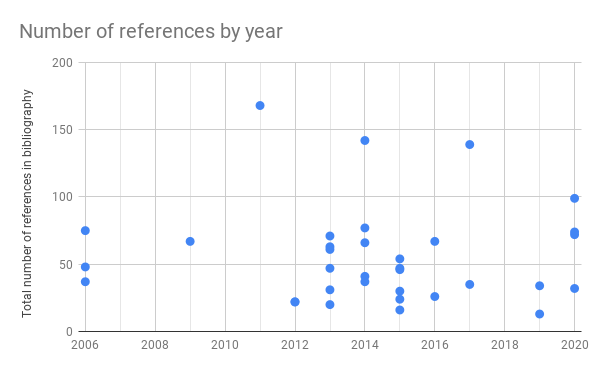
The length of the theses in pages appears to be correlated with the total number of references, so that the longer the thesis, the more references it contains, and vice versa.
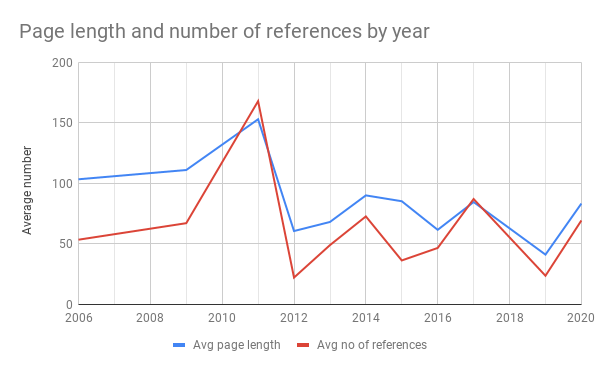
The overall prevalence of sources by type shows us what kinds of sources students in Economics are citing. Not surprisingly, academic journals were the most popular kind of source cited. Academic journals were closely followed by websites. The website category is broad, however, and includes many academic documents and presentations, including research that was accessed on popular and freely available online databases, such as EconPapers, IDEAS, NBER, RePEc, and SSRN.
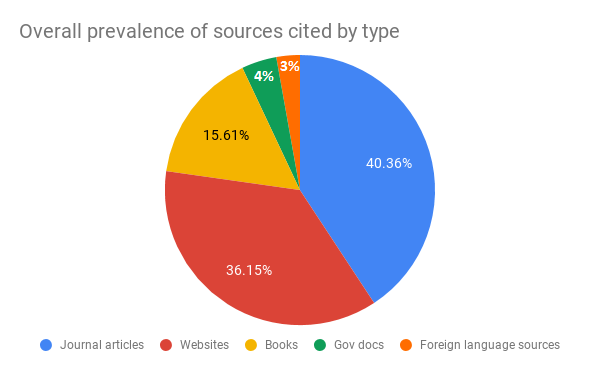
When we look at the average frequency of source types by year, it is pretty clear that academic journals and websites appear to follow a similar citation pattern, while the citation of books appears to follow a different trend downward over time.
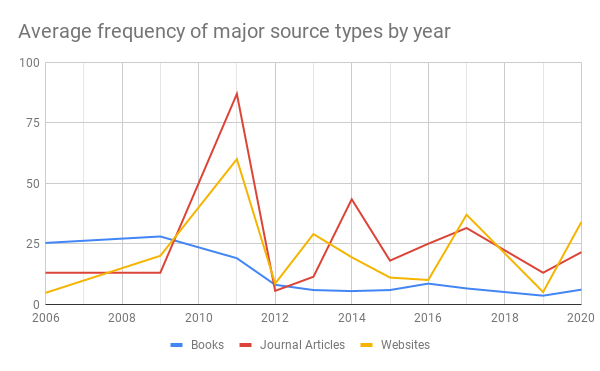
When we look at the the average number of citations to academic journal articles compared to the average number of references per year, they appear to be correlated. The average economics thesis cites 22.59 academic journal articles, with 2 being the smallest number of articles cited, and 87 being the maximum.
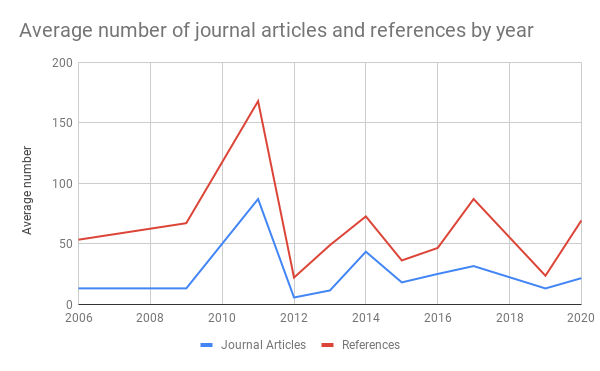
Quite pleasantly for our librarians, the vast majority of journal articles cited were available through our library’s databases and journal subscriptions.
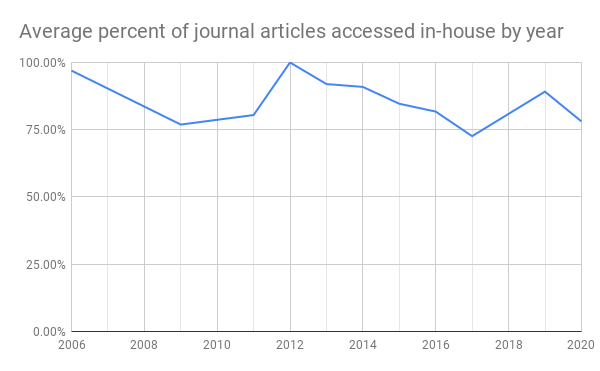
Websites followed academic journals closely in frequency of citations. The average economics honors thesis cited websites 20.24 times, with 0 websites representing the minimum, and 88 websites standing in for the maximum.
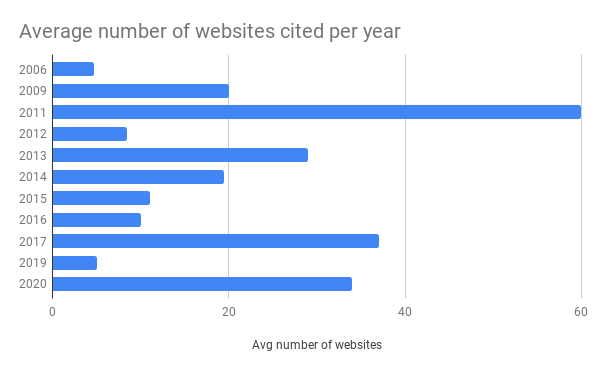
The overall pattern of websites relative to the average number of references again looks similar to academic journals.
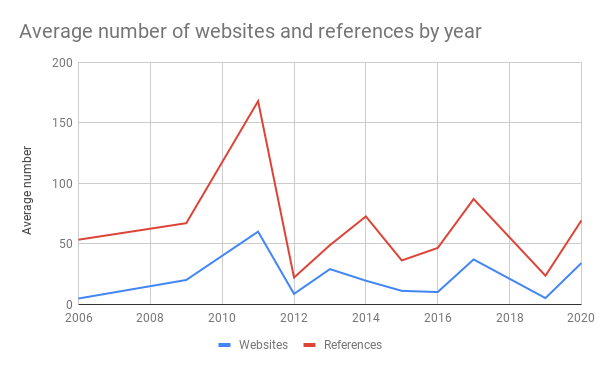
Despite an apparent downward trend in book usage, which, given societal and technological transformations over the past 15 years, is not surprising, books were still an important source of information for a good number of honors theses in economics.
The average thesis cites books 8.74 times, with a minimum of 0, and a maximum of 38. Overall, books accounted for 15.61% of all sources cited. There were 4 theses that cite no books at all, and 6 theses that cite books for at least 30% of their sources.
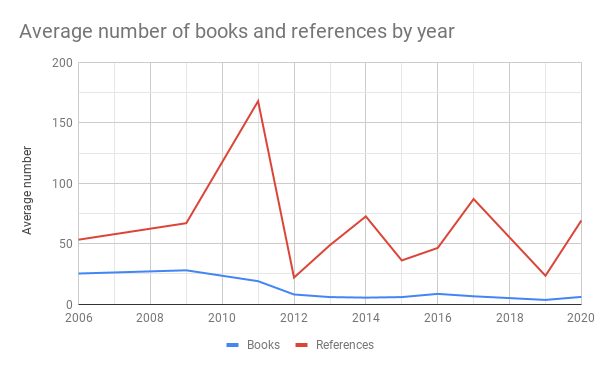
The percentage of books accessed in-house, meaning through the library’s consortium with Trinity College and Wesleyan University (CTW), was a bit lower than the percentage of journal articles. This could be due to the frequency of citations to textbooks, which the library does not attempt to collect.
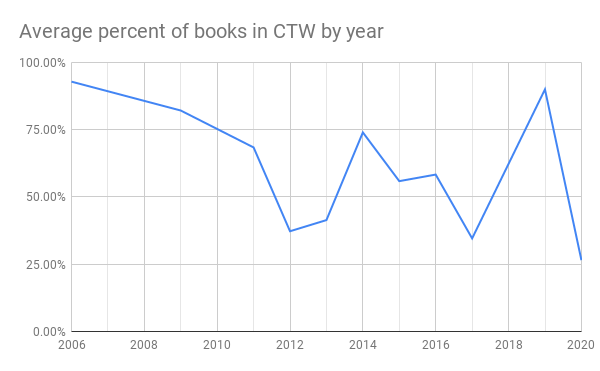
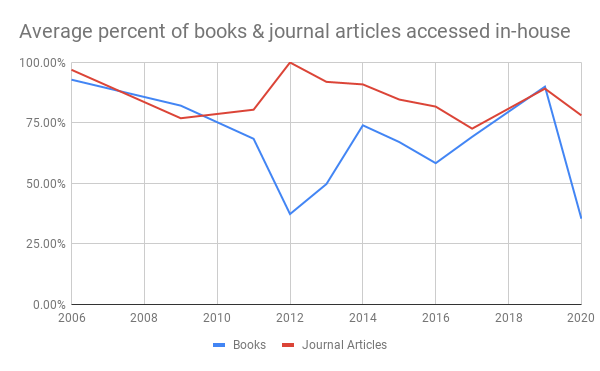
Some other kinds of sources that were tracked include US government publications and foreign language sources. Government publications were cited 79 times, representing about 4.15% of all sources. They were more important for some theses than others. Significantly, gov docs accounted for at least 15% of all references in at least 4 theses.
Foreign language, or non-English language sources were cited 53 times, accounting for 2.79% of all references. Significantly, foreign-language sources made up at least 15% of all references in 4 theses, and they accounted for 45% of all sources in 2 theses that relied heavily on them.
The Average Economics Honors Thesis
- 81 pages in length
- 55 references in its bibliography
- 22 academic journal articles
- 20 websites
- 8 books
- 2 gov docs
- 1.5 foreign language sources
Citation Issues
The most common citation problems had to do with consistency, or inconsistency. They can be summarized with the following list:
- Alphabetization was not always evident.
- Authors’ names were treated inconsistently in terms of spelling, order (Last name, First name), and priority (the order in which they appear on the publication).
- Book chapters and other sources cited in other sources posed problems. For example, multiple chapters from the same book were cited inconsistently within the same paper.
- National Bureau of Economic Research (NBER) papers were popular in the economics honors theses, though they were rarely cited consistently, whether within a single paper or across the collection.
- Pagination was rarely offered consistently, so some sources would have pagination, others wouldn’t, and many contained an inconsistent mix, even within the category of journal articles and book chapters, where one would expect pagination to be relatively consistent.
- URLs were listed inconsistently even when it was clear sources were accessed online.
- Volume and Issue numbers for journal articles were cited inconsistently.
- Year of publication was an attribute that jumped around quite a bit within the citations themselves (from the front of the citation to the back of it), and which was sometimes not given at all, even when it was available on the source cited.
Further Consideration
Honors theses at Connecticut College are popular documents in our Digital Commons, as they are downloaded often around the world. Because they bear the names of their authors, the faculty advisors who worked to bring them to life, and the name of Connecticut College, it is important to think twice about what we are sharing on the internet.
Each year, new honors students struggle with the lack of overarching standards and/or guidelines in place for the creation of new theses. Each department handles their honors theses differently, and sometimes the faculty within a department will handle them differently. This level of customization is certainly a strength in some regards, but in others it lets some students slip between the cracks and they may fail to get the structure or attention they seek.
If we compare the results of this citation analysis of economics honors theses at Connecticut College with the field at large and the substantial body of literature on citation analysis that already exists, what will we find? How do these results in Economics compare with the honors theses of other departments at Connecticut College, or our peer institutions, Trinity College, Wesleyan University, and others?
How are our students taught to create citations? Are they graded? Are there guidelines in place on course syllabi and individual assignments? Why do citations seem to take longer than ever before for students to create? Can librarians help?
These are all questions I hope to explore further. If you are interested in discussing them with me, please get in touch!
Recent Comments